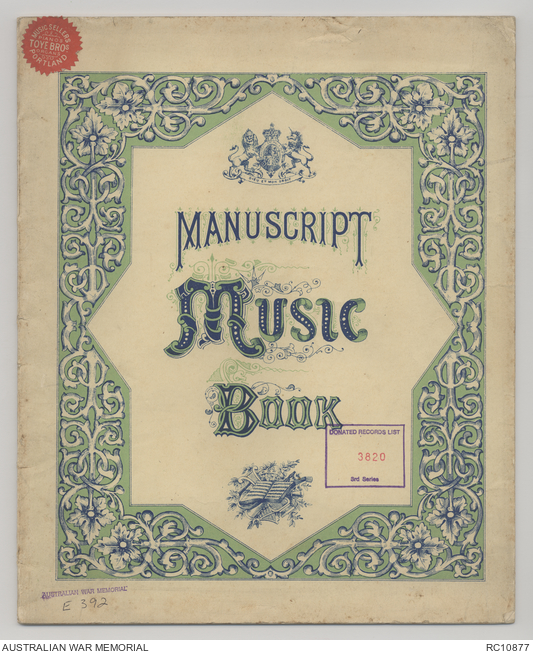| Accession Number | RC10877 |
|---|---|
| Collection number | Sheet Music Collection 392 |
| Collection type | Published Collection |
| Record type | Item |
| Item count | 1 |
| Measurement | Overall - closed: 31 cm x 26.2 cm |
| Object type | Sheet Music |
| Maker |
Bevan, Frederick Weatherly, Frederic Edward |
| Place made | United Kingdom |
| Date made | c.1914-1918 |
| Conflict |
First World War, 1914-1918 |
[Sheet music] The admiral's broom









Handwritten musical notation for the song titled 'The admiral's broom', with lyrics written by Frederic Edward Weatherly and music composed by Frederick Bowen. The song is believed to have originally been published about 1891. This version is believed to have been written into a manuscript music book by Ernest Alfred 'Nick' Nicholls, during the First World War period. Also included in the book is the first four lines of the piece titled 'The bird with a broken wing'.
The lyrics of this song talk about Admiral Tromp of the Dutch Navy who ties a broom to the mast and Admiral Blake of the British Navy who ties a whip to the mast. The song is believed to have been inspired by an incident during the English Civil War involving Admiral Robert Blake and Admiral Maarten Harpertszoon van Tromp. Kevin Daly writes of this event in a biography of Peter Dawson, who recorded 'The Admiral's Broom, writing: 'The Dutch Commander, Admiral van Tromp, boasted that he would tie a broom to his mast as a symbol that he would sweep the sea free of the English. Blake retorted that he would whip the Dutch, and strapped a heavy whip to his mast. Between 19th May 1652 to 31st July 1683, Blake shattered Holland's navy in a series of lightning engagements.'
In addition to being a proliferate lyricist who is said to have written the lyrics for 3000 songs, Frederic Edward Weatherly was also an author and a lawyer. Some of his most famous songs include 'The Holy City', 'Danny Boy' and 'Roses of Picardy'.
Frederick Charles Bevan was the first professor of singing at the University of Adelaide and Elder Conservatorium and emigrated to Australia from England with his family in 1898. Prior to this, he held positions at Westminster Abbey, St James Palace and St Paul's Cathedral in London. He contributed over 100 songs during his career.
Towards the bottom of this page is a sound recording of this sheet music, or a parody, that was created as part of the Music and the First World War project. More information about this recording, including names of the performers, can be found on the catalogue record for the sound recording. A link to the catalogue record for the sound recording can be found at the bottom of this page, under the heading ‘Related objects’ where it can be identified with the prefix [sound recording].
- Download PDF document of [Sheet music] The admiral's broom (file)
-
Listen to
[Sheet music] The admiral's broom